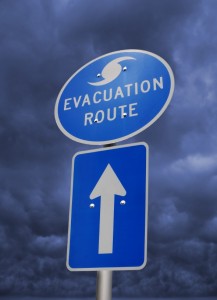Preparation Begins Early Before Hurricane Season Arrives
Written by Post Public Information Representative, Jun 9, 2010, 0 Comments
 Courtesy Raul Leal,
Courtesy Raul Leal,
(Austin, Tx) -Hurricane season has arrived along with a flurry of activity around the state—government agencies, volunteer groups and private sector partners, all getting ready for the next big storm.
The Texas Department of Transportation (TxDOT) plays a critical role in storm education, evacuation and recovery. So each year, along with its hundreds of partners around the state, the department begins, months ahead of time, preparing for the possibility of seasonal storms.
“Preparations for the hurricane season begin at the end of the previous year while experiences and lessons learned are still fresh on the mind,” explained Amadeo Saenz, TxDOT executive director.
“TxDOT divisions and districts meet early to talk about what worked and what didn’t,” Saenz noted. “With each event, we learn more about the procedures we can put in place to bring the citizens of Texas to safety.”
As the hurricane season draws near, TxDOT starts an intensive review and training preparedness program to make sure emergency personnel and systems are in place to handle potential situations.
An important part of the preparedness program is reviewing TxDOT’s multiple Emergency Management Plans as early as possible. Video teleconferences with division and district emergency personnel across the state begin early in the year with an extensive review of the components of each plan before a hurricane hits the Texas coast. Responders are prepped on logistical support teams, evacuation, reentry plans and other emergency policies and procedures including reviewing and updating phone
lists and websites.
Seasonal training begins early to prepare personnel on emergency traffic control measures, debris removal and other recovery procedures that are put in place immediately following the storm. Employees are also trained to serve on Courtesy Patrols during evacuations. After each storm or event, employees share experiences including situations with wildlife (snakes, alligators and wild hogs), downed electrical wires, and living and working for several weeks in a primitive and sometimes dangerous
environment. All this shared information is rolled into a number of fairly intensive and well-structured training programs throughout the year.
TxDOT also participates in regional and statewide emergency drills involving other agencies and local jurisdictions throughout the year.
Equally important on the preparedness list are actions to identify and prepare facilities and equipment for quick mobilization and making sure contraflow routes are open and available (no lane closures). TxDOT personnel also identify—well in advance of a storm—locations of comfort stations along designated evacuation routes.
Division traffic operations personnel review evacuation plansto be prepared to open—if necessary—evaculanes or to implement contraflow measures. Dynamic Message Signs (DMS) are tested and made ready to communicate emergency messages to travelers across the state, including frequent warnings to citizens in other parts of the state to not travel to the affected areas.
Each year, personnel evaluate the agency’s external and internal communications efforts designed to keep employees and the public informed. A comprehensive hurricane preparedness section on the agency’s website includes information on road conditions and evacuation procedures, in addition to links to other agencies with information on local conditions including the www.texasonline.com ( http://www.texasonline.com/ ), a state website. Regional maps online show evacuation routes, all
accessible on the Web at TxDOT’s site, www.txdot.gov ( http://www.txdot.gov/ ).



